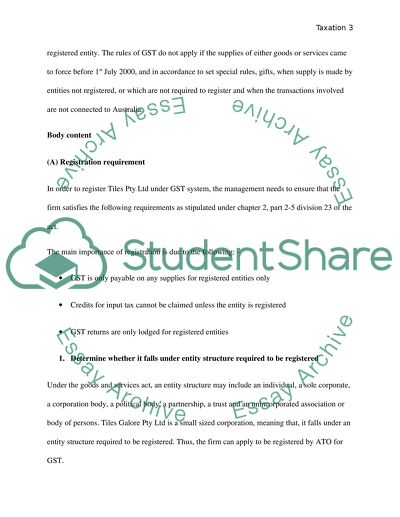Cite this document
(“Goods and Services Tax (GST) Essay Example | Topics and Well Written Essays - 3750 words”, n.d.)
Retrieved de https://studentshare.org/finance-accounting/1400376-taxation-gst-assignment
Retrieved de https://studentshare.org/finance-accounting/1400376-taxation-gst-assignment
(Goods and Services Tax (GST) Essay Example | Topics and Well Written Essays - 3750 Words)
https://studentshare.org/finance-accounting/1400376-taxation-gst-assignment.
https://studentshare.org/finance-accounting/1400376-taxation-gst-assignment.
“Goods and Services Tax (GST) Essay Example | Topics and Well Written Essays - 3750 Words”, n.d. https://studentshare.org/finance-accounting/1400376-taxation-gst-assignment.


